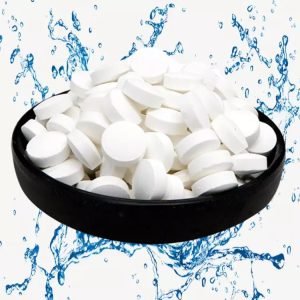Affordable Chlorine Tablet Manufacturing Process

,字数要求1000字以上
# Affordable Chlorine Tablet Manufacturing Process
## Introduction to Chlorine Tablets
Chlorine tablets are a popular and convenient way to disinfect swimming pools, drinking water, and other water systems. These compact, slow-dissolving tablets provide a steady release of chlorine, making them ideal for maintaining proper sanitation levels. The demand for affordable chlorine tablets has grown significantly as more homeowners and small businesses seek cost-effective water treatment solutions.
## Understanding the Manufacturing Process
The production of cheap chlorine tablets involves several carefully controlled steps to ensure quality while keeping costs low. Manufacturers achieve affordability through efficient processes, bulk purchasing of raw materials, and optimized production techniques without compromising the product’s effectiveness.
### Step 1: Raw Material Selection
The primary ingredient in chlorine tablets is trichloroisocyanuric acid (TCCA), a stable chlorine compound. To produce affordable tablets:
– Source high-quality TCCA in bulk quantities
– Use food-grade binders and stabilizers
– Select cost-effective but safe additives
– Implement strict quality control on all incoming materials
### Step 2: Mixing and Blending
The manufacturing process begins with precise mixing:
1. Measure TCCA powder according to formulation
2. Add stabilizers and binders in correct proportions
3. Blend thoroughly to ensure uniform distribution
4. Test mixture samples for consistency
This stage is crucial for creating tablets that dissolve at the proper rate and maintain their structural integrity.
### Step 3: Tablet Compression
The blended powder moves to tablet pressing machines:
– High-pressure compression forms the powder into tablet shapes
– Dies determine tablet size (common sizes: 1″, 3″)
– Compression force affects dissolution rate
– Automated systems ensure consistent tablet weight
Modern rotary presses can produce thousands of tablets per hour, significantly reducing production costs through economies of scale.
### Step 4: Drying and Curing
After compression:
– Tablets move through drying chambers
– Controlled temperature removes excess moisture
– Curing process enhances stability
– Quality checks verify hardness and density
Proper drying prevents crumbling and ensures long shelf life.
### Step 5: Quality Control Testing
Before packaging, tablets undergo rigorous testing:
– Available chlorine content analysis
– Dissolution rate measurement
– Physical integrity tests
– Chemical stability assessments
These tests guarantee that affordable tablets still meet industry standards for effectiveness.
### Step 6: Packaging and Storage
Final steps in the manufacturing process:
– Automated counting fills containers
– Sealed packaging prevents moisture absorption
– Proper labeling with usage instructions
– Climate-controlled storage until shipment
Efficient packaging systems help maintain low production costs while protecting product quality.
## Cost-Saving Strategies in Production
Manufacturers implement several approaches to keep chlorine tablet prices affordable:
### Bulk Material Purchasing
– Negotiate long-term contracts with suppliers
– Buy raw materials in large quantities
– Maintain strategic inventory levels
### Energy Efficiency
– Use modern, energy-efficient equipment
– Implement heat recovery systems
– Optimize production schedules
### Labor Optimization
– Automate repetitive processes
– Cross-train employees
– Implement lean manufacturing principles
### Waste Reduction
– Recycle production byproducts
– Minimize material loss during processing
– Implement precise measuring systems
## Safety Considerations in Manufacturing
While producing affordable chlorine tablets, manufacturers must prioritize safety:
– Proper ventilation systems to control dust
– Employee protective equipment (masks, gloves)
– Regular equipment maintenance
– Emergency response protocols
– Staff training on chemical handling
These measures protect workers while preventing costly accidents or production delays.
## Environmental Responsibility
Low-cost production doesn’t mean compromising environmental standards:
– Treat and recycle process water
– Proper disposal of manufacturing byproducts
– Energy-efficient facility design
– Sustainable packaging options
– Compliance with environmental regulations
## Market Considerations for Affordable Tablets
Understanding customer needs helps balance affordability with quality:
– Residential pool owners need cost-effective solutions
– Small commercial operations require reliable sanitation
–
Keyword: cheap chlorine tablets production
